As I write in my notebook we are driving in Rajasthan, en route to Jaipur, having left the hotel at 8:30am just after breakfast. I couldn't resist the Indian buffet so breakfast for me consisted of vadas, pakoras, aloo, cheese roti, sambal and idli.
Leaving Delhi, the traffic was slow-moving. Whilst excited by the prospect of what lay ahead, our stay in Delhi was too short to even scratch the surface of the city, let alone have time to meet any of its people. Before entering Rajasthan we drive along a number of toll roads. We pass through Haryana - a small progressive state – which is characterised, at least form the roadside, by modern glass office blocks and retail outlets.
We finally enter Rajasthan at 11.00am and shortly after, at around 11.20, take a short break at a diner just off the roadside. It has been raining intermittently since we left Delhi, sometimes torrential, causing some sections of the road to flood. It's bright and sunny now.
On the side of the road the brown earth has turned into a rich mud which is churned up by the over-sized tyres of the heavy lorries.
India is a nation on the move economically and transport and haulage is integral to this development.
At various points along the way we see evidence of lorries having unloaded as pick-up trucks, tuck-tucks and cycle wagons are piled high with boxes!
Roadside mechanics
Along the roadside single storey concrete blocks are divided into shops with metal roller shutters. Fan belts hang in one shop, more automotive parts in another, a group of men squat on the floor repairing an axle.
Just after 12 noon we enter Rajasthan and drive through the village or town of Begror where our driver Ratan is from. Just past Behrir we drive through another town where for almost a mile there is a single and sometimes double row of trucks parked some of which are being serviced on the roadside by mechanics working out of small shops and garages.
Their tools are rudimentary and basic, hammers, huge wrenches and spanners plus a tin bowl. The tool of choice seems to be a small club hammer - it must fix most things. The trucks are huge and generally have three to four men riding in the cab.
Driving
Indian drivers are fearless. White lines on the road are seen as advisory, perhaps they are seen as decoration, or perhaps they are not seen at all. There is no lane discipline and vehicles move from lane to lane to overtake. Following the exhortation on the back of the trucks, most vehicles sound their horn when passing these lengthy titans of the road. Jeeps and pickups are often packed full either with women in brightly coloured saris or men with billowing shirts hanging out of the back.
Every vehicle on the road is usually filled to capacity with either passengers or cargo.
Driving, on what we would consider to be the wrong side of the road, seems to make perfect sense to many Indian drivers. Driving on the wrong side is fine, either because the road surface is better, the traffic is faster moving or both. Yet despite being fearless, often in the face of oncoming traffic, drivers are calm and do not seem to suffer the same apoplexy that we do at home when we get cut up or have near miss. In terms of oncoming traffic one of the rules, probably unwritten, is that you need to be able to see the face of the driver of the oncoming car clearly before you take evasive action.
Unfortunately the combination of calm and fearless driving does have consequences and we witness the results.
On the road to Rajasthan
Thursday, August 11, 2011
 Delhi, India
Delhi, India
Other Entries
-
1A Passage to India
Aug 083 days prior London, United Kingdomphoto_camera0videocam 0comment 0
London, United Kingdomphoto_camera0videocam 0comment 0 -
2Looking for the real India...
Aug 092 days prior Delhi, Indiaphoto_camera8videocam 0comment 0
Delhi, Indiaphoto_camera8videocam 0comment 0 -
3New day - New Delhi
Aug 101 day prior Delhi, Indiaphoto_camera25videocam 0comment 0
Delhi, Indiaphoto_camera25videocam 0comment 0 -
4On the road to Rajasthan
Aug 11 Delhi, Indiaphoto_camera9videocam 0comment 0
Delhi, Indiaphoto_camera9videocam 0comment 0 -
5Jaipur - The pink city
Aug 11later that day Jaipur, Indiaphoto_camera14videocam 0comment 0
Jaipur, Indiaphoto_camera14videocam 0comment 0 -
6From Palace of Winds to Stargazing and City Palace
Aug 121 day later Jaipur, Indiaphoto_camera49videocam 0comment 0
Jaipur, Indiaphoto_camera49videocam 0comment 0 -
7From pink city to ghost city
Aug 132 days later Jaipur, Indiaphoto_camera9videocam 0comment 0
Jaipur, Indiaphoto_camera9videocam 0comment 0 -
8The Jewel in the Crown
Aug 132 days later Fatehpur Sikri, Indiaphoto_camera22videocam 0comment 0
Fatehpur Sikri, Indiaphoto_camera22videocam 0comment 0 -
9A grand night in Agra
Aug 132 days later Agra, Indiaphoto_camera7videocam 0comment 0
Agra, Indiaphoto_camera7videocam 0comment 0 -
10Taj Mahal - Crown of palaces
Aug 143 days later Agra, Indiaphoto_camera24videocam 0comment 0
Agra, Indiaphoto_camera24videocam 0comment 0 -
11All aboard the Shatabdi Express
Aug 154 days later Agra, Indiaphoto_camera2videocam 0comment 0
Agra, Indiaphoto_camera2videocam 0comment 0 -
12On the road from Jhansi to Khajuraho
Aug 154 days later Jhansi, Indiaphoto_camera8videocam 0comment 0
Jhansi, Indiaphoto_camera8videocam 0comment 0 -
13Temple "..."in the presence of God"
Aug 154 days later Khajuraho, Indiaphoto_camera19videocam 0comment 0
Khajuraho, Indiaphoto_camera19videocam 0comment 0 -
14Temples
Aug 165 days later Khajuraho, Indiaphoto_camera35videocam 0comment 0
Khajuraho, Indiaphoto_camera35videocam 0comment 0 -
15From spiritual life to village and school life
Aug 165 days later Rajnagar, Indiaphoto_camera14videocam 0comment 0
Rajnagar, Indiaphoto_camera14videocam 0comment 0 -
16Aarti on the Ganges
Aug 165 days later Varanasi, Indiaphoto_camera17videocam 0comment 0
Varanasi, Indiaphoto_camera17videocam 0comment 0 -
17Morning ritual on the Ganges
Aug 176 days later Varanasi, Indiaphoto_camera26videocam 0comment 0
Varanasi, Indiaphoto_camera26videocam 0comment 0 -
18Sarnath - Starting the Wheel of the Dharma
Aug 176 days later Sarnath, Indiaphoto_camera31videocam 0comment 0
Sarnath, Indiaphoto_camera31videocam 0comment 0 -
19Leaving Varanasi or bye bye Benares
Aug 187 days later Varanasi, Indiaphoto_camera0videocam 0comment 0
Varanasi, Indiaphoto_camera0videocam 0comment 0 -
20Transit Delhi
Aug 187 days later Delhi, Indiaphoto_camera1videocam 0comment 0
Delhi, Indiaphoto_camera1videocam 0comment 0 -
21Overnight luxury in boom town
Aug 187 days later Gurgaon, Indiaphoto_camera0videocam 0comment 0
Gurgaon, Indiaphoto_camera0videocam 0comment 0 -
22Return trip to Delhi airport
Aug 198 days later Gurgaon, Indiaphoto_camera2videocam 0comment 0
Gurgaon, Indiaphoto_camera2videocam 0comment 0

 Delhi, India
Delhi, India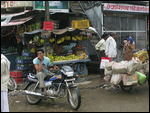
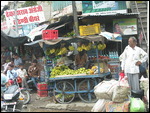
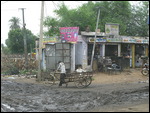
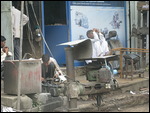
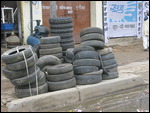
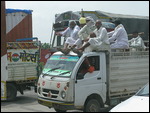
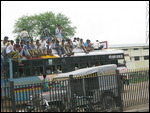
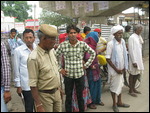
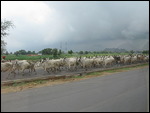


2025-05-23